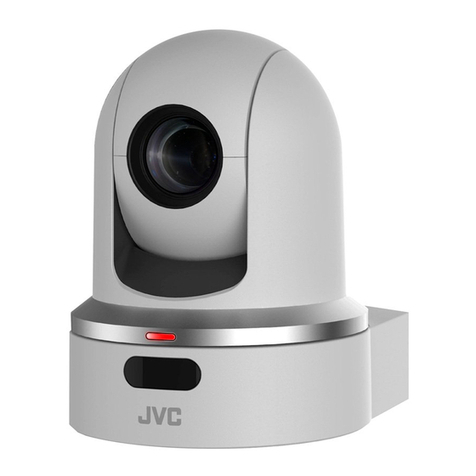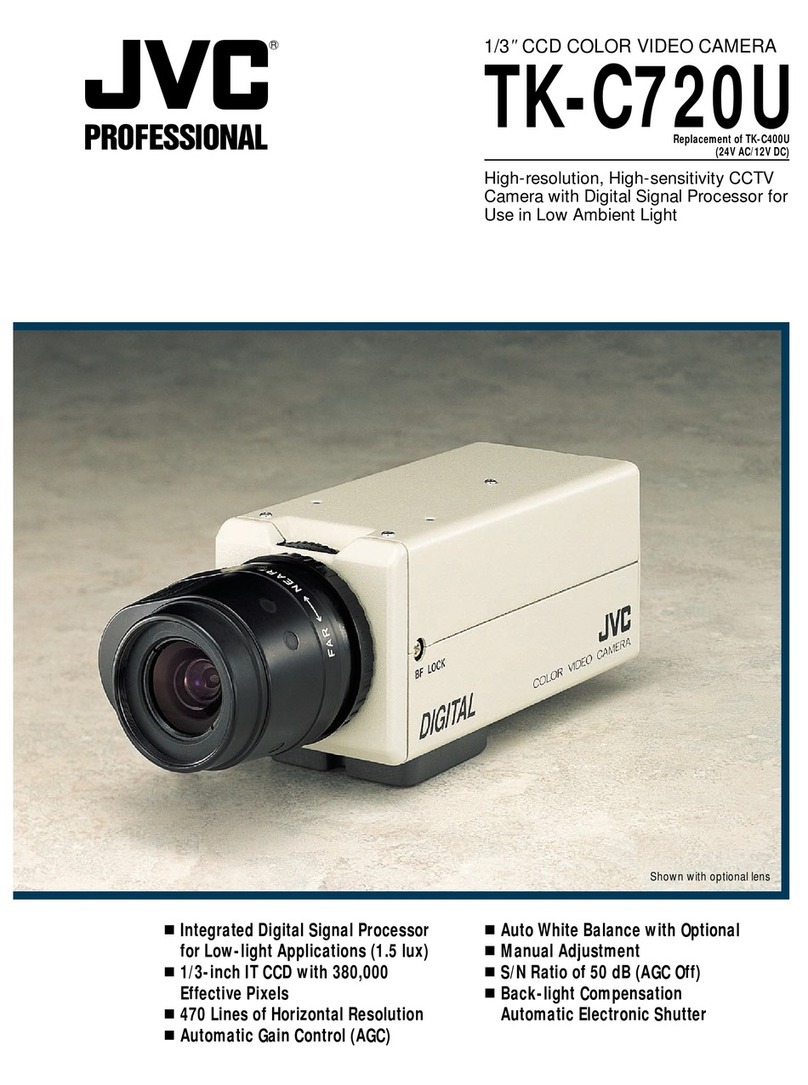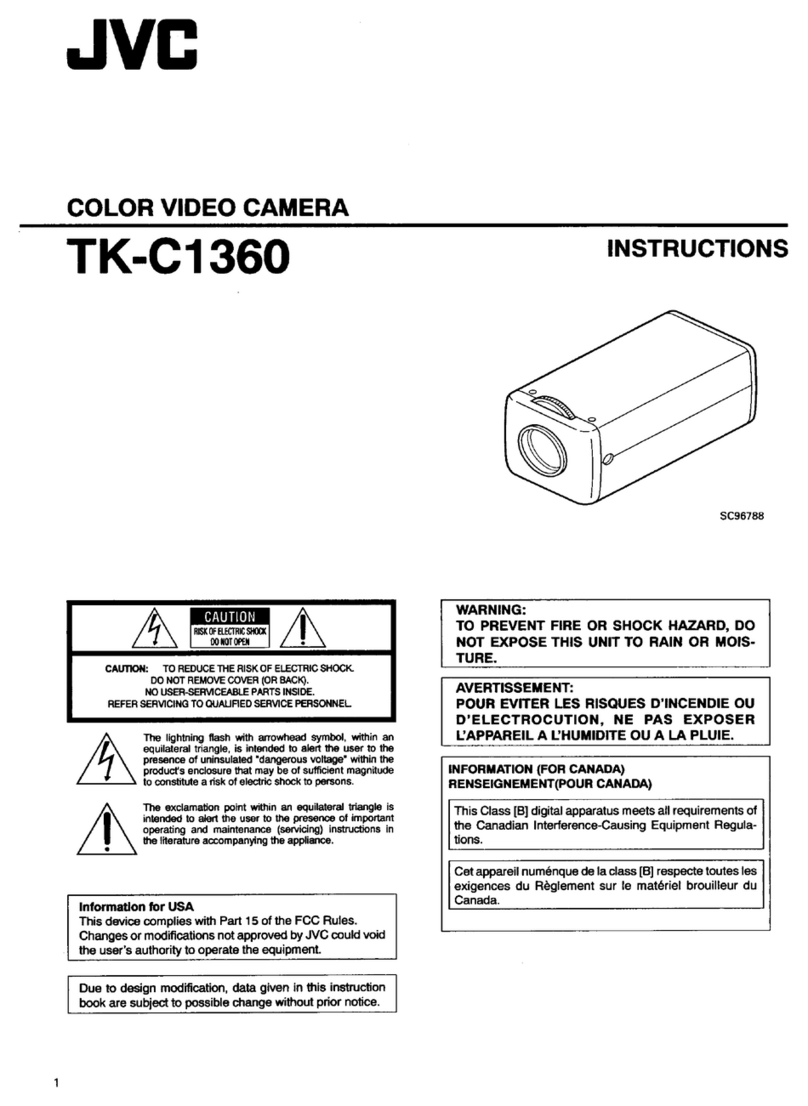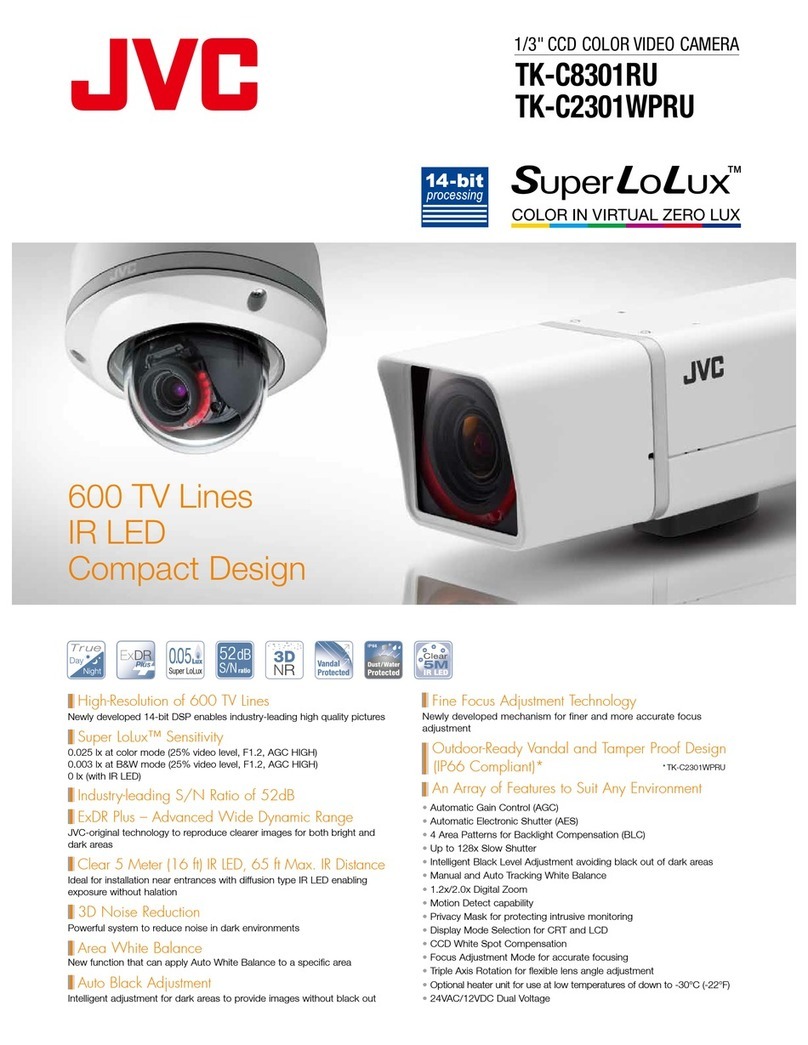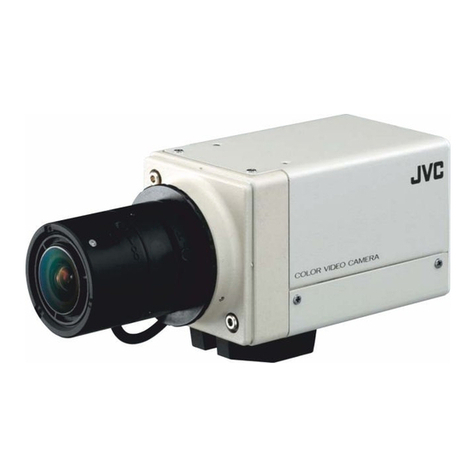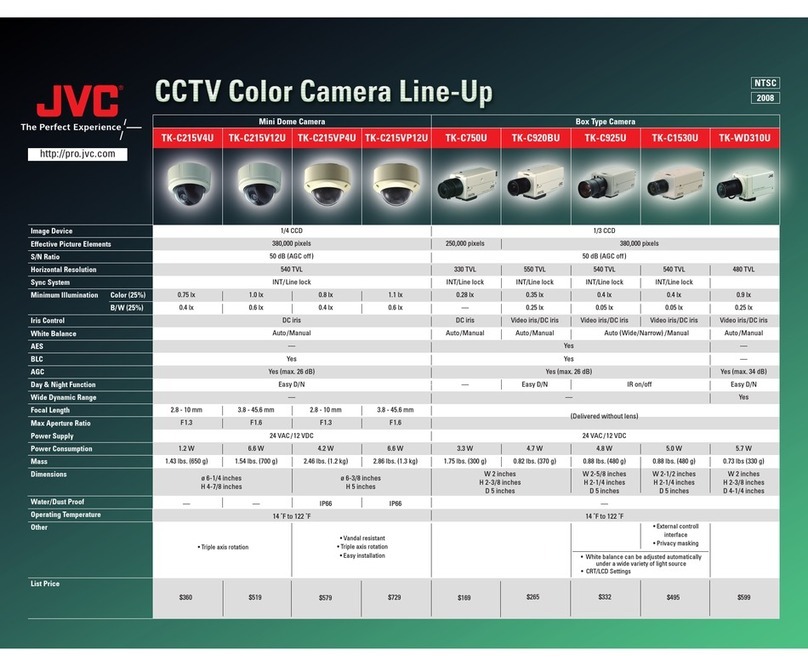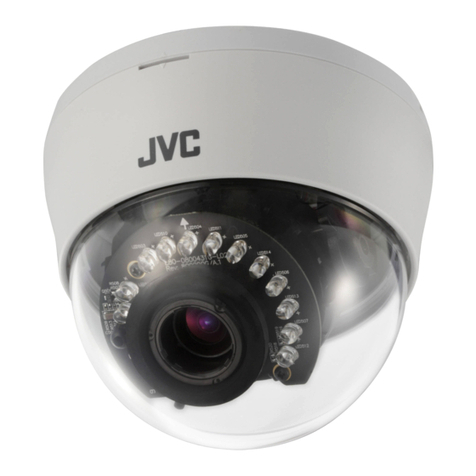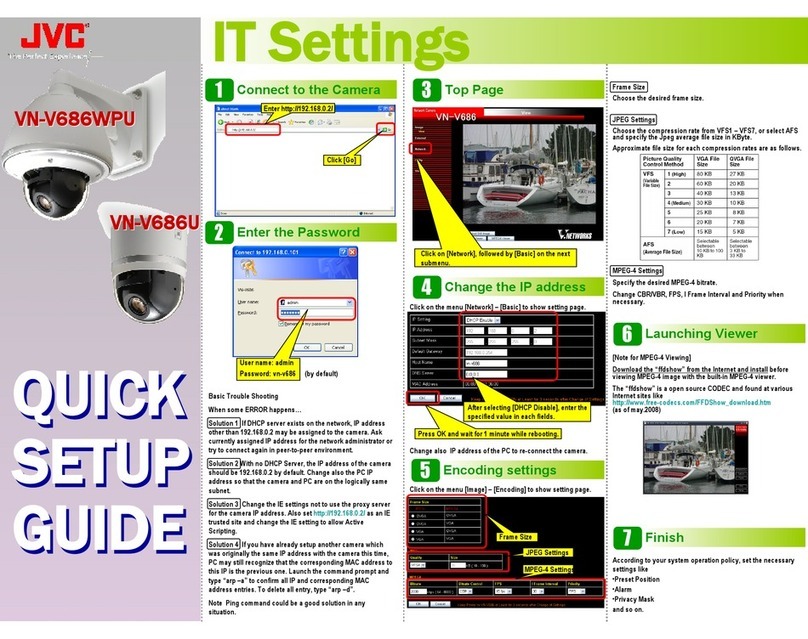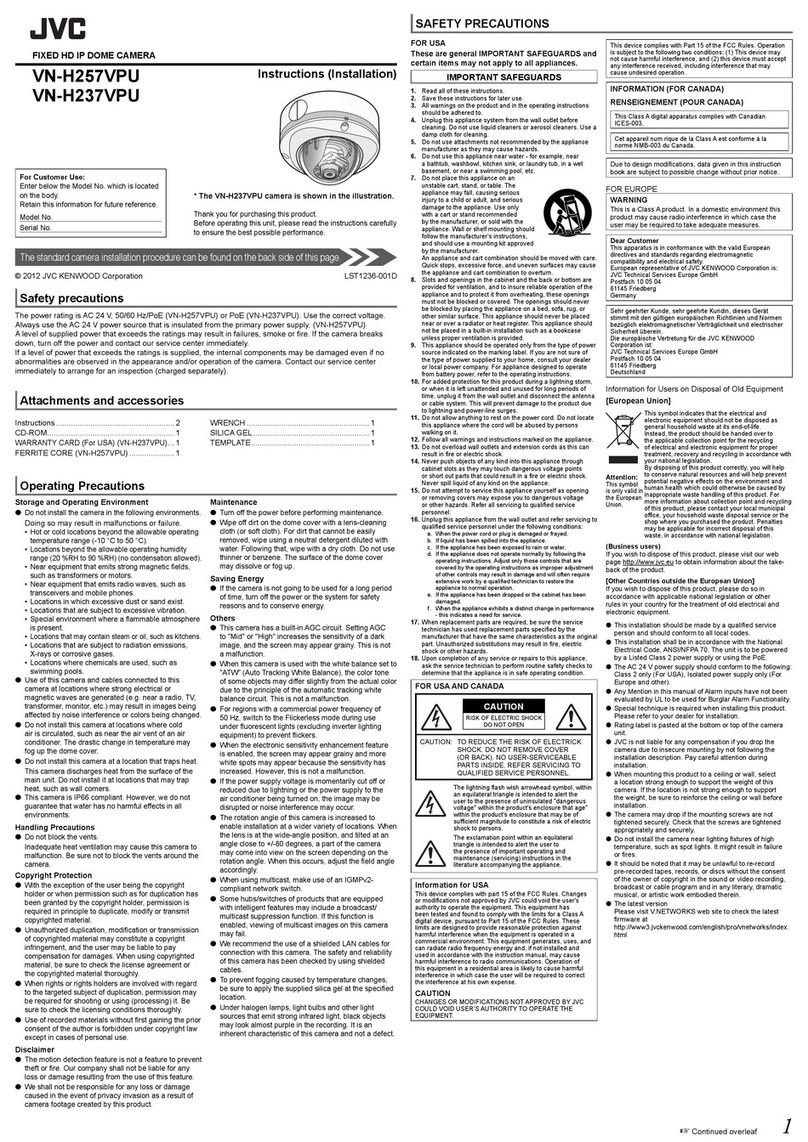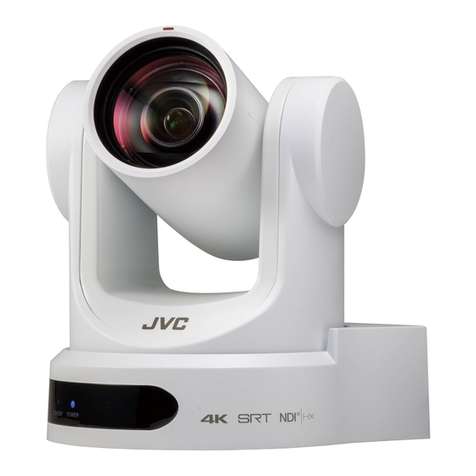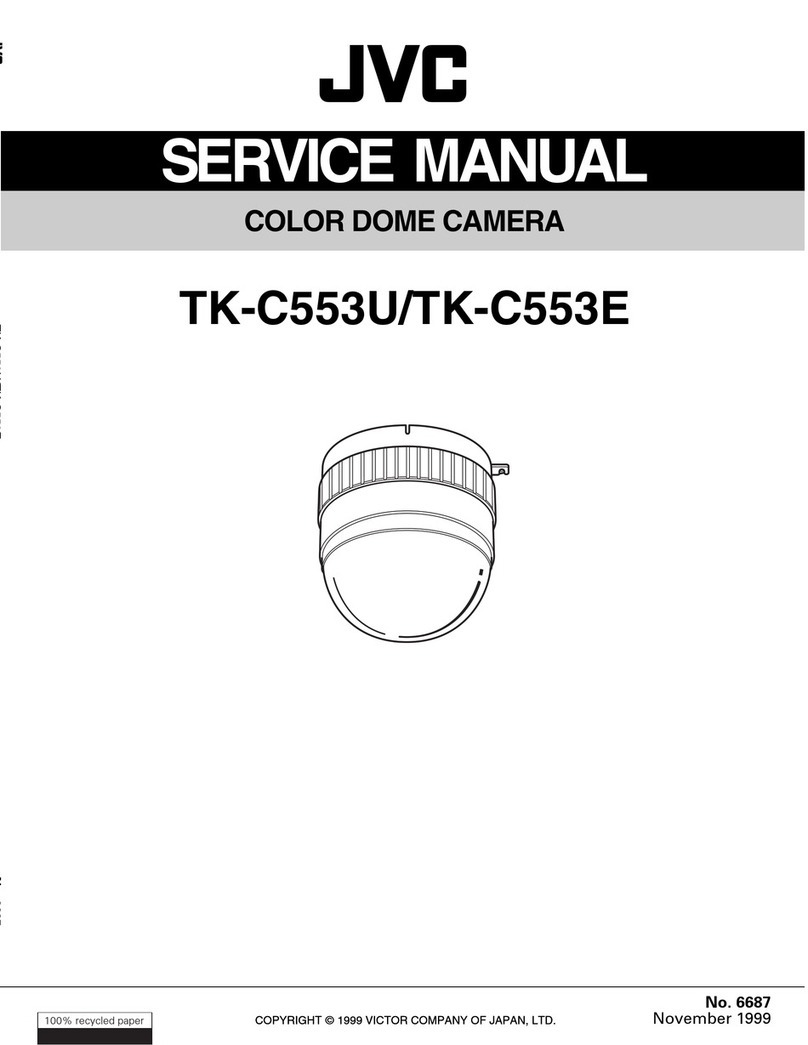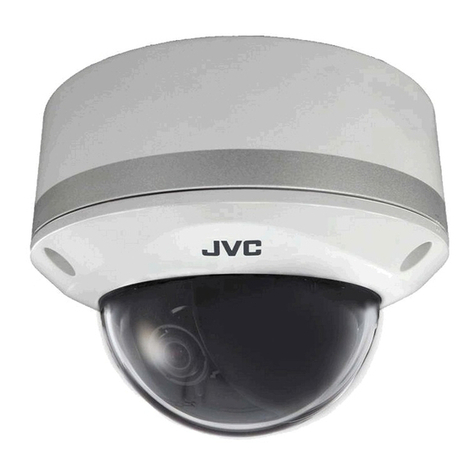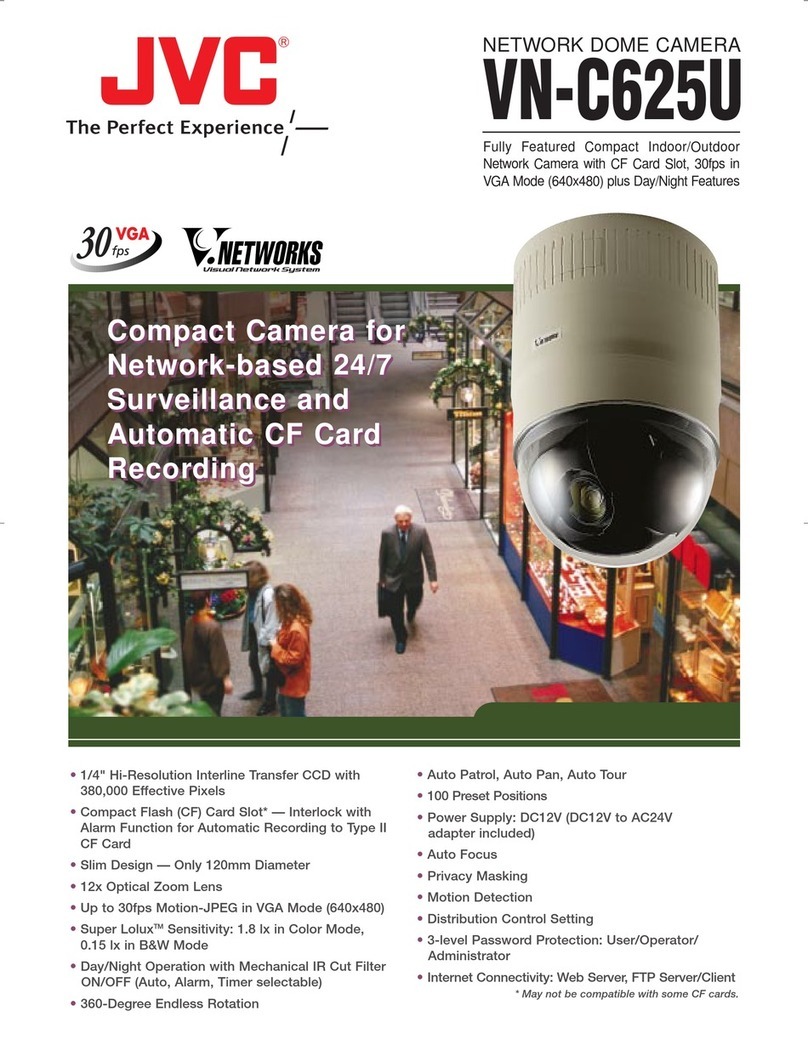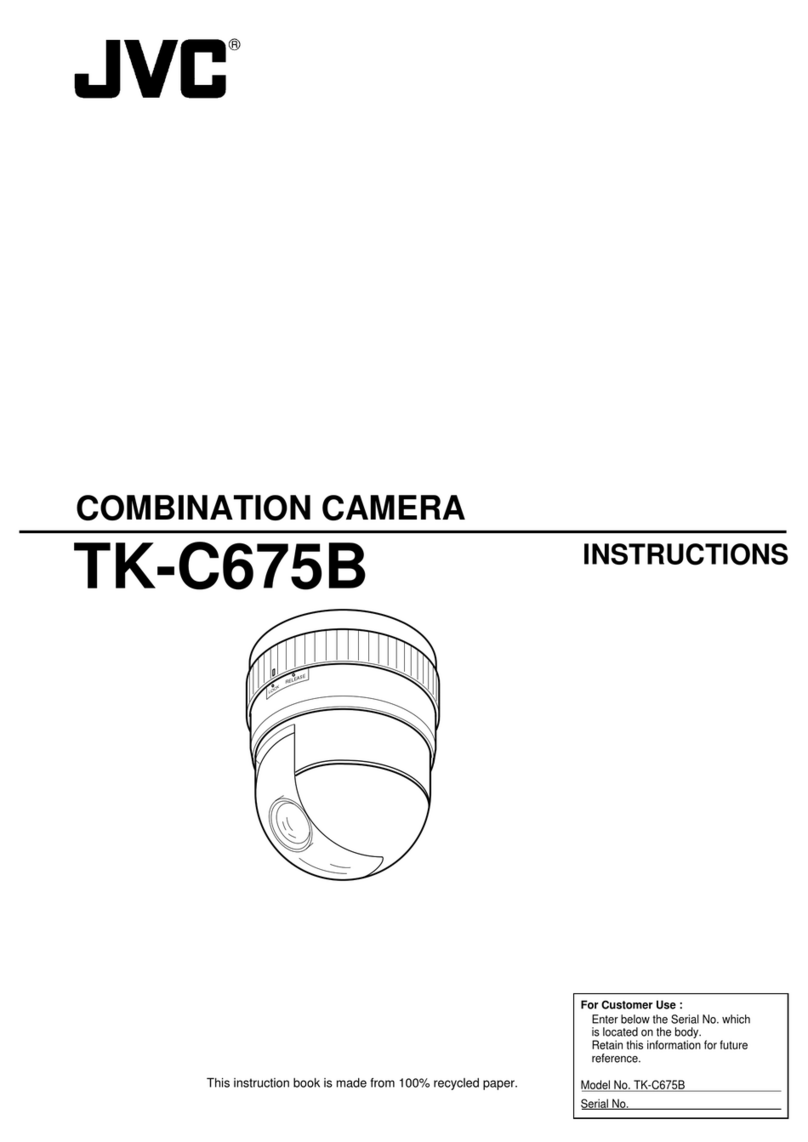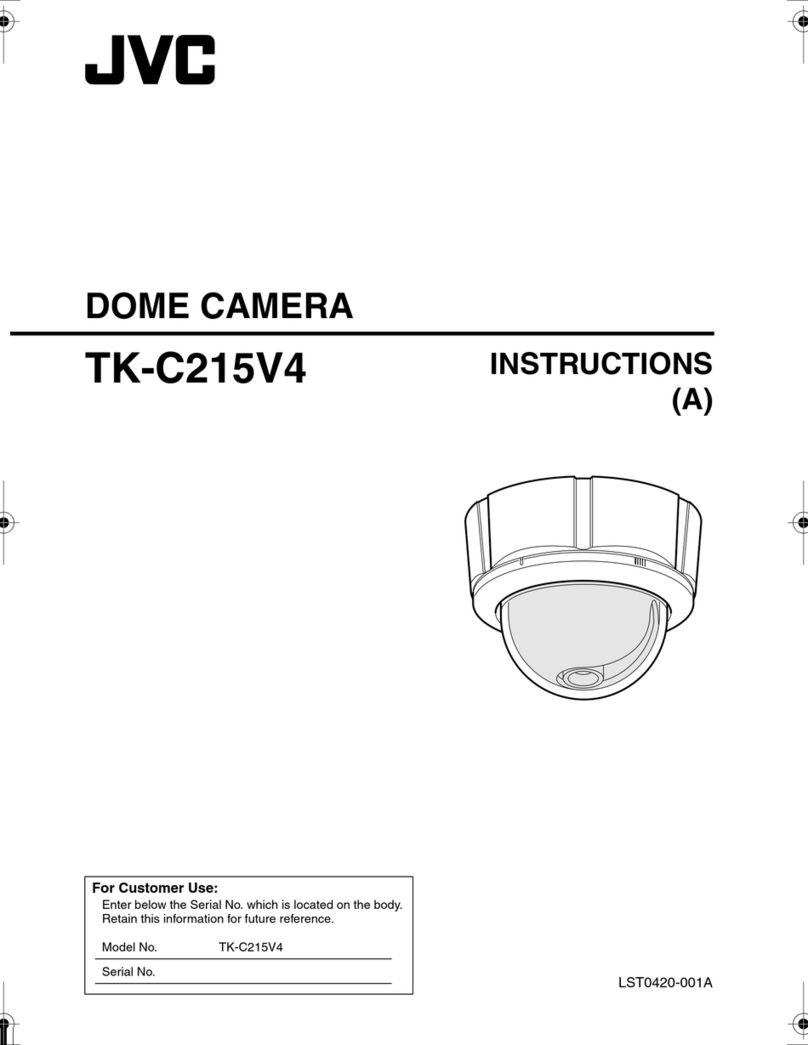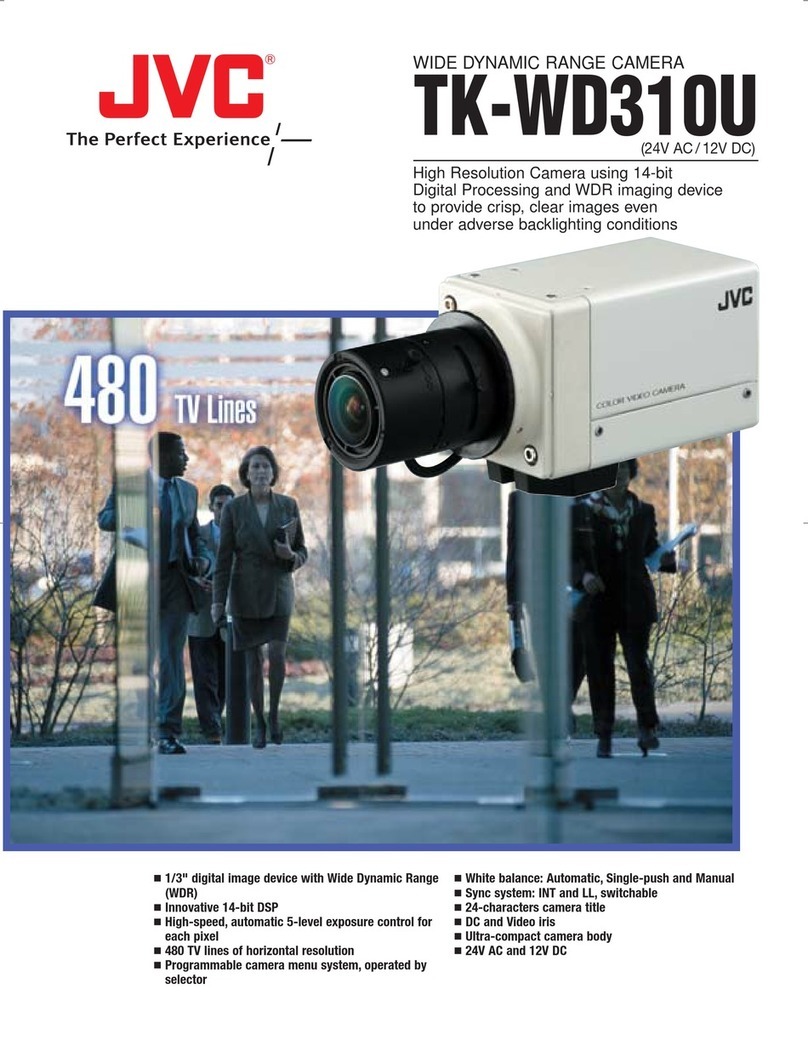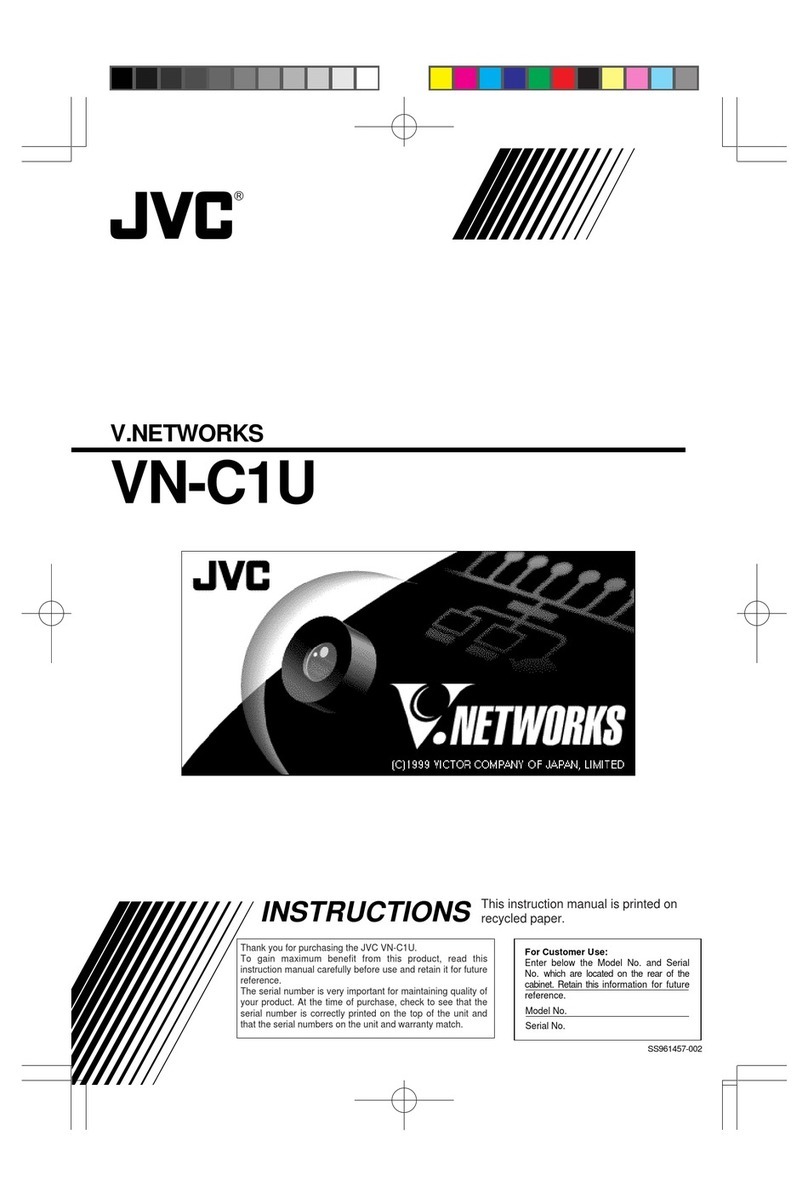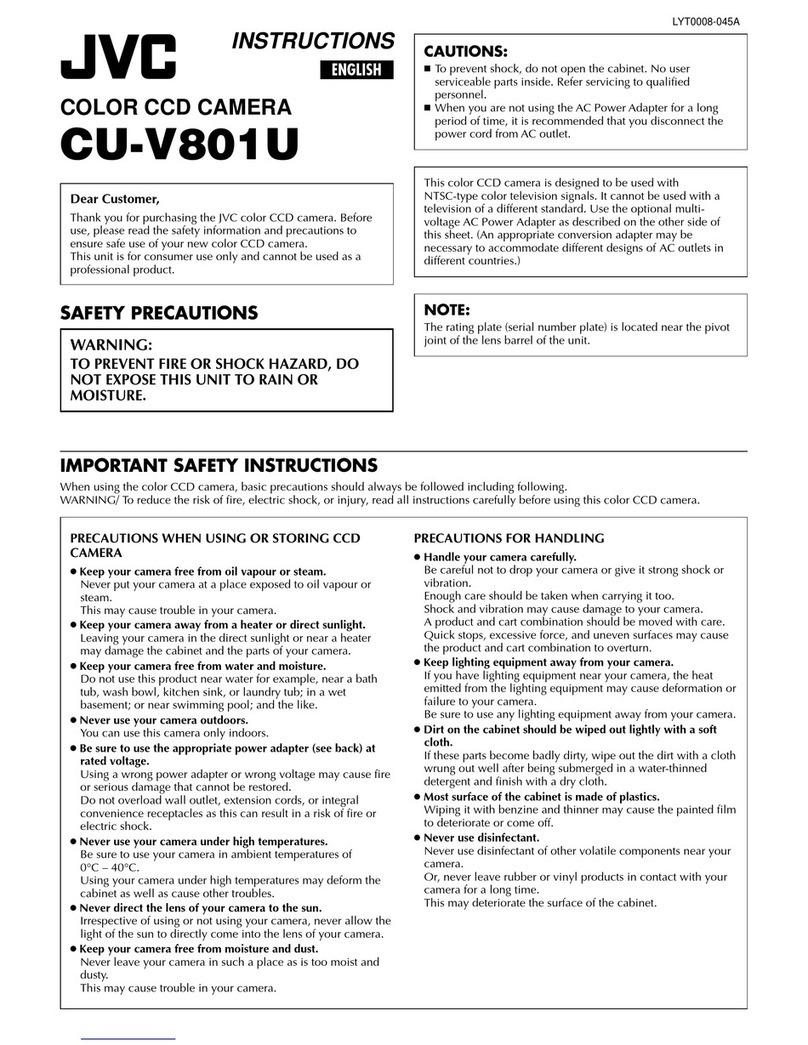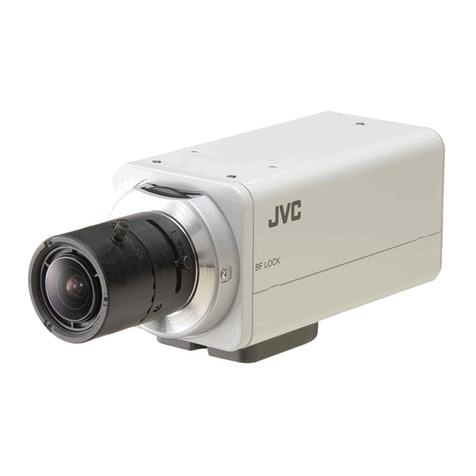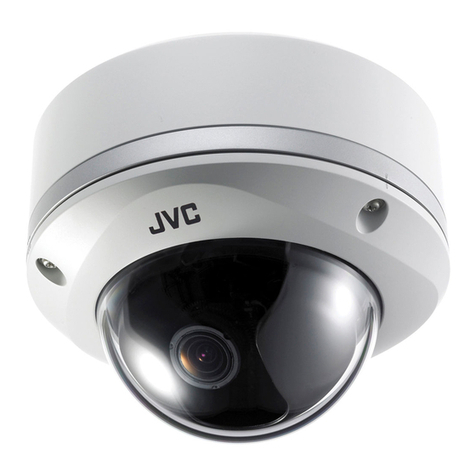
9
Others
䢇This product has a built-in AGC circuit. When
AGC is AOnB, the product sensitivity
increases automatically at dark places and
the image on the screen may appear grainy.
This is not a malfunction.
䢇When White Balance is set to AAutoB, the
principle of automatic tracking white balance
circuit may cause the color of the image to be
different from the actual color of the object,
depending on the condition of the object.
However, this is not a malfunction.
䢇
If a high-intensity object (such as a lamp) is
shot, vertical lines may appear on the image
(smear phenomenon) or blurring may occur
around the high-intensity object (blooming
phenomenon). This is a CCD characteristic and
is not a malfunction.
䢇The electronic shutter of this product is set to
1/60 by default. To prevent flickering under
fluorescent lighting (except inverter
illumination) in a location with commercial
power frequency of 50 Hz, switch the shutter
speed to 1/100. (The sensitivity decreases a
little when the shutter speed is 1/100.)
䢇When Easy Day and Night is set to AOnB, the
image becomes black and white in dark
locations. As the sensitivity is increased at
this time, the screen may appear grainy and
white spots may also increase. In addition,
when color images are changed to black and
white, bright areas of the screen are
emphasized and they may be difficult to see.
However, this is not a malfunction.
䢇The image may be distorted or be mixed with
noises when the power voltage is cut off
instantaneously or is lowered by a lightning
strike or by switching on an air conditioner.
䢇The rotation angle of this product is set to
wide angle to support wide range equipment.
When the lens zoom is wide and the tilt angle
is approximately ±80 ⬚, the rotation angle
may cause the dome cover to be reflected in
the image. In this case, adjust the field angle
if required. (APg. 29)
䢇When multicast is in use, use the IGMPv2-
compliant network switch.
䢇Electricity can be supplied to this product
either by using the PoE or connecting to the
DC12 V power supply. Make sure to select
only one mode of electrical supply.
Connecting the power cable and the LAN
cable for the PoE at the same time may result
in failure or malfunction of the camera.
(APg. 24, 25)
Copyrights of video
䢇With the exception of the user being the
copyright holder or when permission has
been granted concerning duplication, etc. by
the copyright holder, permission is required in
principle for the duplication, modification,
transmission, etc. of copyrighted video/audio.
Unauthorized duplication, modification,
transmission, etc. of copyrighted material
may constitute a copyright infringement and
the user may be liable to compensate for any
damages. When using copyrighted video/
audio, be sure to check thoroughly the
license agreement, etc. of the copyrighted
material.
When there are rights or rights holders of the
duplicating subject, permission may be
required for shooting or using (processing) it.
Be sure to check thoroughly the licensing
conditions.
Maintenance
䢇Be sure to turn off the power before
performing maintenance.
䢇Wipe using a soft cloth.
Wiping with thinner or benzene may dissolve
or tarnish its surface. For dirt that cannot be
easily removed, wipe using a neutral
detergent diluted with water, followed by
wiping with a dry cloth.
Saving Energy
䢇When not in use for a long period, turn off the
power of the system to prevent risk and to
reduce power consumption.
VN-C215_EN.book Page 9 Monday, November 27, 2006 9:46 AM
